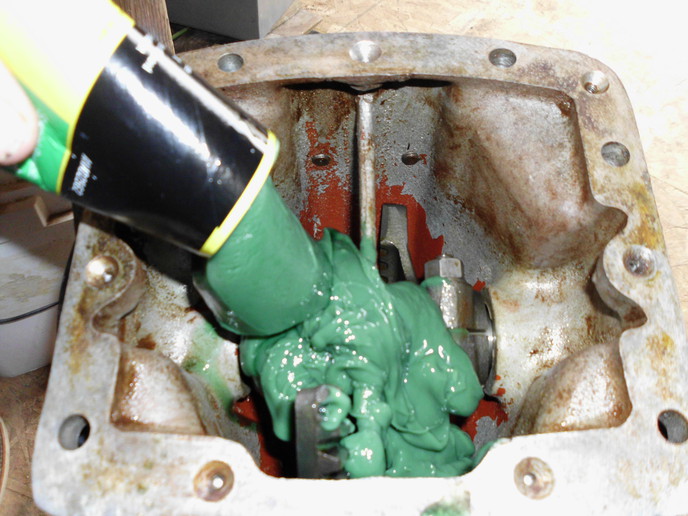I understand that this is probably an embarrassingly beginner question, and I really don't have any background experience. I have a lever action grease gun, and I have a gear box which will require approximately two 14 oz. cartridges of grease to lubricate properly. The gear box is currently empty.
I already have the grease cartridges that I need, but I would love to be able to just empty them completely in one stroke as opposed to going through the process of loading them into the lever grease gun and emptying them 1 gram at a time. Is there an easy way to do this?
As a follow up question, it appears that the previous owner had dumped some kind of oil in the gear box. It either leaked, spilled, or was drained out prior to me getting it. There is almost none left in there. Should I do some kind of rinsing step before applying the proper grease in there or would I be safe in assuming that a tiny amount of contamination at this stage would not cause any problems. The reason I had to get this special grease is because I am lubricating the gearbox of an old Parks planer and there are some bronze and possibly other old yellow metal bushings in there and I needed to fine the proper, non-corrosive lubricant.
Thanks,
Andy
I already have the grease cartridges that I need, but I would love to be able to just empty them completely in one stroke as opposed to going through the process of loading them into the lever grease gun and emptying them 1 gram at a time. Is there an easy way to do this?
As a follow up question, it appears that the previous owner had dumped some kind of oil in the gear box. It either leaked, spilled, or was drained out prior to me getting it. There is almost none left in there. Should I do some kind of rinsing step before applying the proper grease in there or would I be safe in assuming that a tiny amount of contamination at this stage would not cause any problems. The reason I had to get this special grease is because I am lubricating the gearbox of an old Parks planer and there are some bronze and possibly other old yellow metal bushings in there and I needed to fine the proper, non-corrosive lubricant.
Thanks,
Andy




